 |
| White sage, yarrow, rosemary and aloe vera–the kind of plants we’ll be planting more of. |
Let’s assume that we have a lead problem in our backyard. That’s a big assumption at this point because we now have two very conflicting test results. But, for the sake of an argument, let’s say the first alarming test is true, what are we going to do about it?
- Radical remediation: Remove all the soil in the yard and replace with new soil.
- Cover the contaminated soil so that it doesn’t give off dust, and so people can’t come in direct contact with it, e.g. lay sod, cover the yard with concrete or decking, or lay down a thick layer of mulch.
- Grow ornamental plants only
- Grow all food in raised beds
- Attempt phytoremediation (grow plants that uptake lead, pull them and send them to the dump)
- Move
It turns out we were already doing some of these things, so we’re just going to keep on going as we were with a few changes. Our yard has always been covered in a thick layer of mulch and we do most of our growing in raised beds. We will stop growing edibles directly in the ground. We’d already planned to redesign the yard to include lots more native and Mediterranean flowering plants. These we can’t eat, but will secure the soil and provide food and shelter for lots of beneficial insects who will aid our food crops. We’re really happy that we’ve always mulched, because it has helped keep the (potentially) contaminated soil in place and has increased bio-activity as the mulch decomposes.
 |
| This raised be would have to be raised higher. |
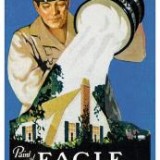
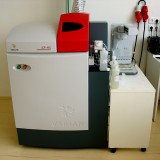
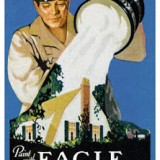
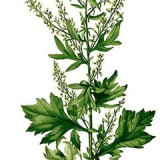
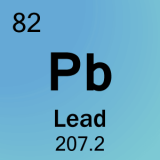
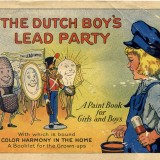
Thanks for this. At least there are options, and they are not terrible ones.
I did not know that about sunflowers and it might be worthwhile to bring along packages of the seeds of these lovely plants as a motivator for concerned members of the community during these information sessions….
Godd luck with all of this. I’ve been following your lead stories, and feel just awful about it.
My kids are studying Ben Franklin in homeschool (they are 7 and three and a half) and he was a really smart and fascinating fellow!! Way ahead of his time.
in a similar situation, and wondering what specifically you will be doing with your beds.
Maybe you should warn all because people have grandchildren and visitors with children. I think little boys are dirt, at least mine came in looking like he rolled in a puddle all the time. Now, I worry because I allowed them all the dig holes. One girl like to sit in a holes she dug. ??? She was only three.
If you removed all the dirt, where would it go? Would someone sell it as topsoil to an unsuspecting buyer. Does someone oversee removal and disposal, or does a homeowner trust the contaminated soil will be treated as such?
@Nutty: That’s a good idea!
@Rose: Ben Franklin is so much fun. I love reading about his time in France–the French adored him, put his face on crockery and the like.
@Rebecca: In a nutshell the beds would be as deep as financially/technically feasible– 1 foot is minimum, but more is better for deep rooted veggies. Then you line the the bottom of the bed with…something. We’d use a layer of gravel, some rec. plastic. But that’s icky. Then of course we’d fill with soil we were sure about.
@Parsimony: Removing the soil is crazy expensive because if it truly does have very high lead levels it is considered toxic waste and has to be dug up by special companies, by guys in haz mat gear and trucked off to places where they throw away toxic stuff, which is scary in itself.
And don’t worry about your kids. Letting them play outside and sit in dirt made them strong. I don’t want anyone keep their kids clean because of this.
Fish Bones to the Rescue (for lead contamination)
http://green.blogs.nytimes.com/2011/07/22/fish-bones-to-the-rescue/
Have you thought about mycoremediation, using mushrooms such as oyster mushrooms to remove the contaminates. I know Paul Stamets at Fungi Perfecti has developed some technology to help clean soil contaminated with oil, maybe you can clear out lead as well.
http://www.fungi.com/mycotech/index.html
P.S. Love your site. Been telling friends and family about you folks. I am in the beginning stages of starting our little homestead up here in the Northern California Mountains. Gotta get a hoophouse built this fall, that is our first task. Already down below freezing at night this week. I will be growing everything in grow-bags and raised beds my first few years, since our soil is so bad, rocky and almost no organic matters. Even the worms don’t like it.
Luck to you in solving the problem.
Here’s a link that might help!
http://www.youtube.com/watch?v=XI5frPV58tY
Hi there,
In parts of Oakland, where yards have lead contaminated soil, they are using ground up fish bones tilled into the soil. Apparently the calcium etc. bonds with the lead into an inert compound that isn’t toxic and isn’t taken up by the plants. Article was sometime during summer 2011. Remediation was cheap too and didn’t require removing all the top soil.
Lisa H.
Also look into “Eden fern” — a friend here in Austin used it to take up arsenic after he and his entire family got poisoned by new decking. Good luck!
So sorry to read about your soil troubles. What you said about soil being everything reminds me of “Waterworld” where a tiny little container of soil was so valued. I read a book about Beethoven that postulated it may have been severe lead poisoning that caused so many of his health issues. I hope you find a solution soon and that you get to spread the word.
I hope that you don’t try to sale your home again … since disclosure laws require that you disclose your lead issues and most buyers will either want a dramatic reduction in price or will just walk away! Despite the fact that we know that lead paint was used in our house, we were warned to never get a lead test because the results have to be disclosed if you sale the home. So, we treat all old paint like it is lead paint …
Thanks so much for all this valuable info. I have a question for you regarding the growing of the 4 plants you mention in your photo caption: white sage, yarrow, rosemary and aloe vera. Did you select these because they don’t readily take up lead or because they do? I am curious because while not edible per se, medicinally speaking these are such useful plants- it would be great news if they were good soil remediators as well.
@Ariel: I can’t say whether those 4 take up a lot of lead or not. Erik was just pointing out that which we’re planting a lot of perennials these days, as opposed to veggies– and anyway, the plants in the pic pre-date the lead scare.
As I understand it the primary concern with lead is not so much its presence in plant flesh (not that lead is good anywhere!), but more in the direct ingestion of the soil via dust and dirt or unpeeled root vegetables.
I’m not worried about using any of those plants medicinally. I don’t know if they’re soil remediators. Frankly, it would be better if they were not, since that would mean they suck up a lot of lead.
@Anon:
Regarding the advice of not getting a soil test so you don’t know so you don’t have to disclose–
That kind of destructive logic makes sense for no one. If somebody buys a house and doesn’t test, then they are risking poisoning their families–just to keep their future resale values high. If someone sells a house and doesn’t disclose, then they are putting others at risk for the sake of profit.
How do we price the developmental capabilities of a baby? What about the reproductive future of a young couple? I’d say its worth whatever it costs. If our tests continue bad, we’ll disclose, of course, and take the hit. We couldn’t live with ourselves otherwise.
In short, lead testing should be mandatory for every home sale, and let the chips fall where they may.
(chip fall! ha! unintentional lead paint joke!)
@Denise, Lisa, and others: Thanks for all the leads! We’ve been getting a lot of advice about bones and mushrooms and other promising treatments in the comments on the various lead posts and in the email. We’re looking into everything, and should have thanked you all sooner.
If you do try phytoremediation, consider electrifying the land mass – it will speed up plant growth & biomass, leading to a faster cleanup. It will also help improve the bioavailability of the lead.
On the other hand, I like the idea of encapsulating with sod… perhaps a combo approach would work here: sod + sunflowers + raised beds??